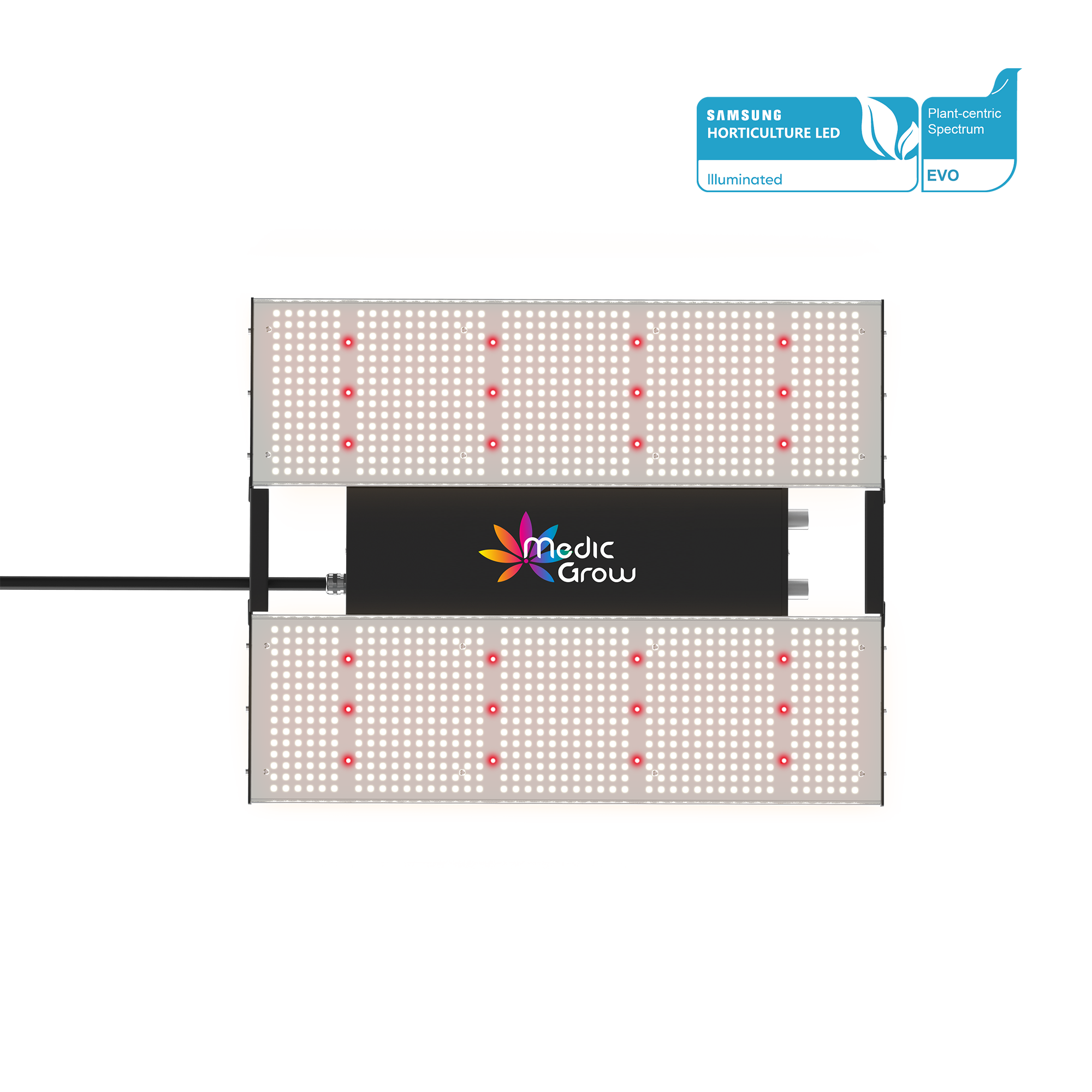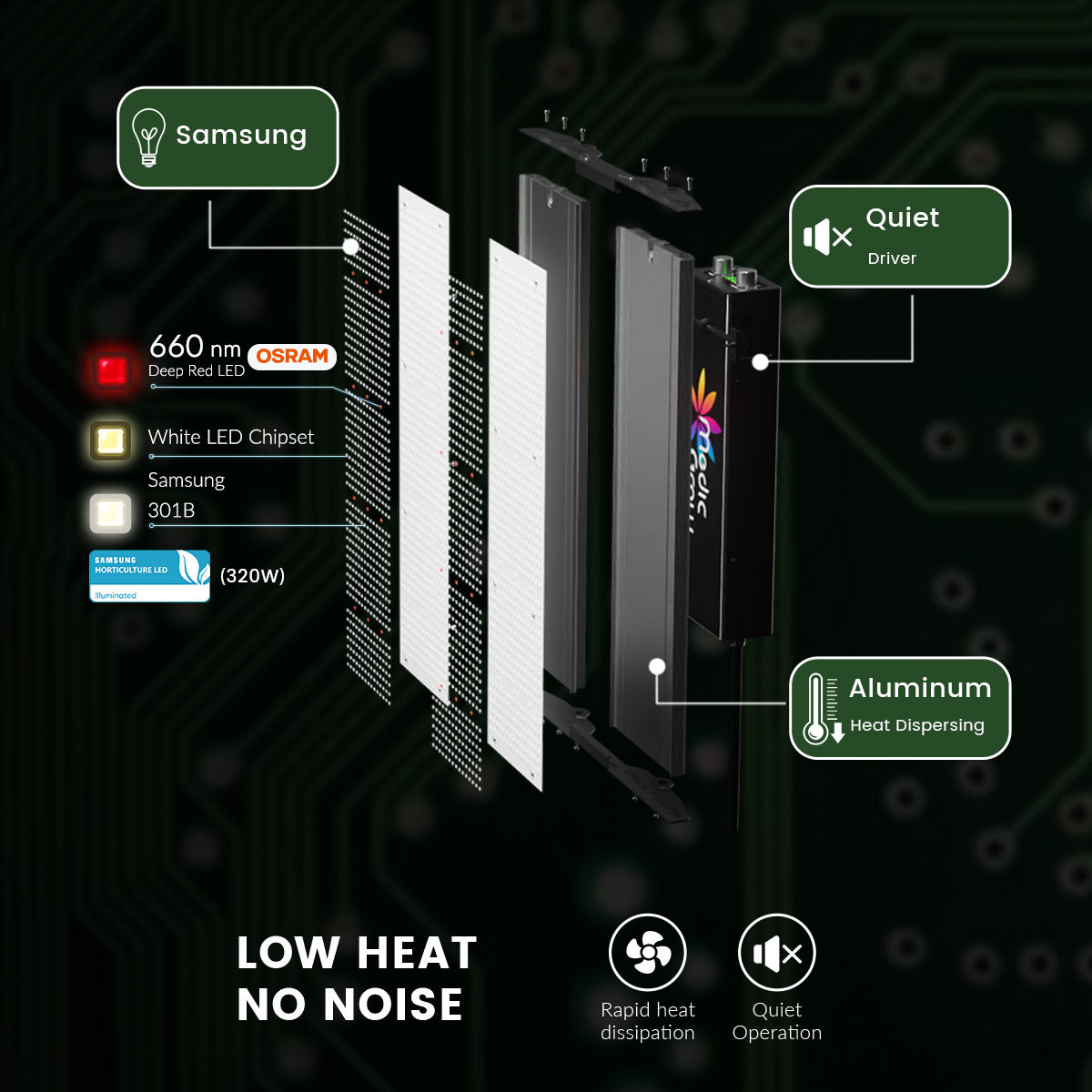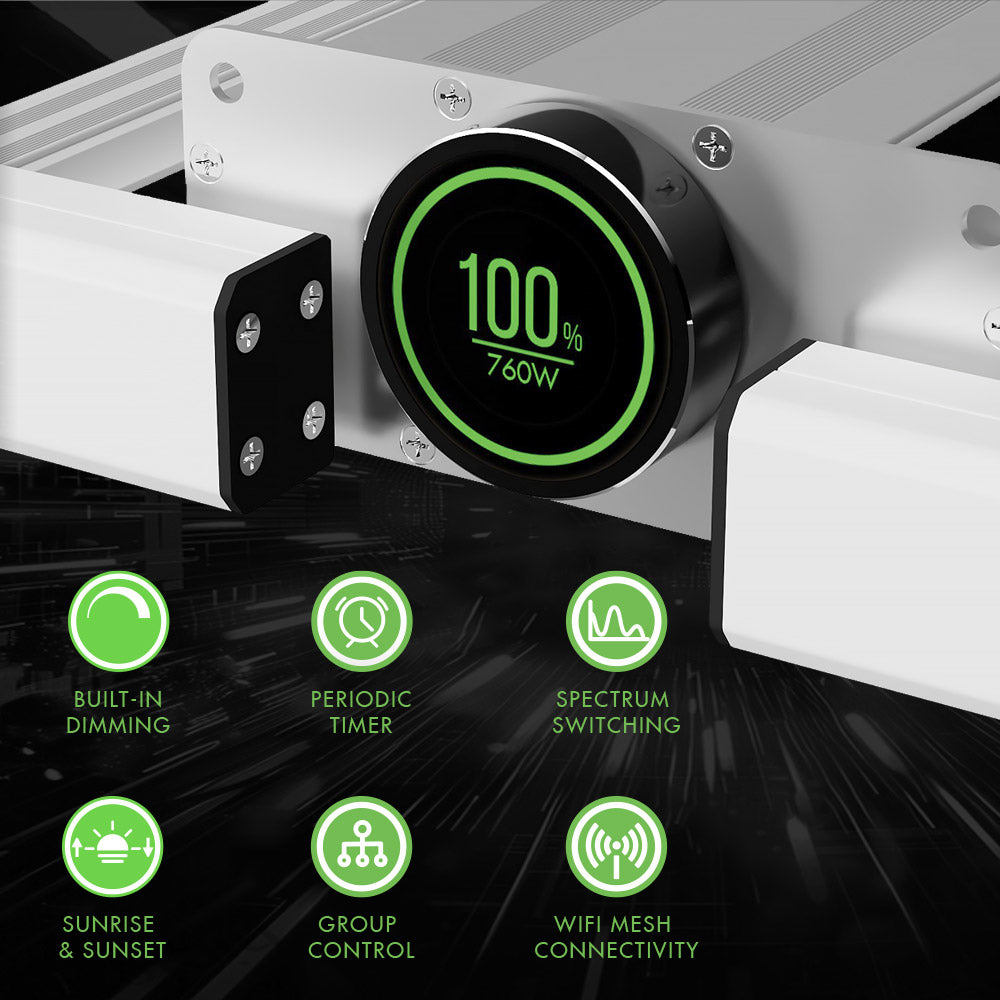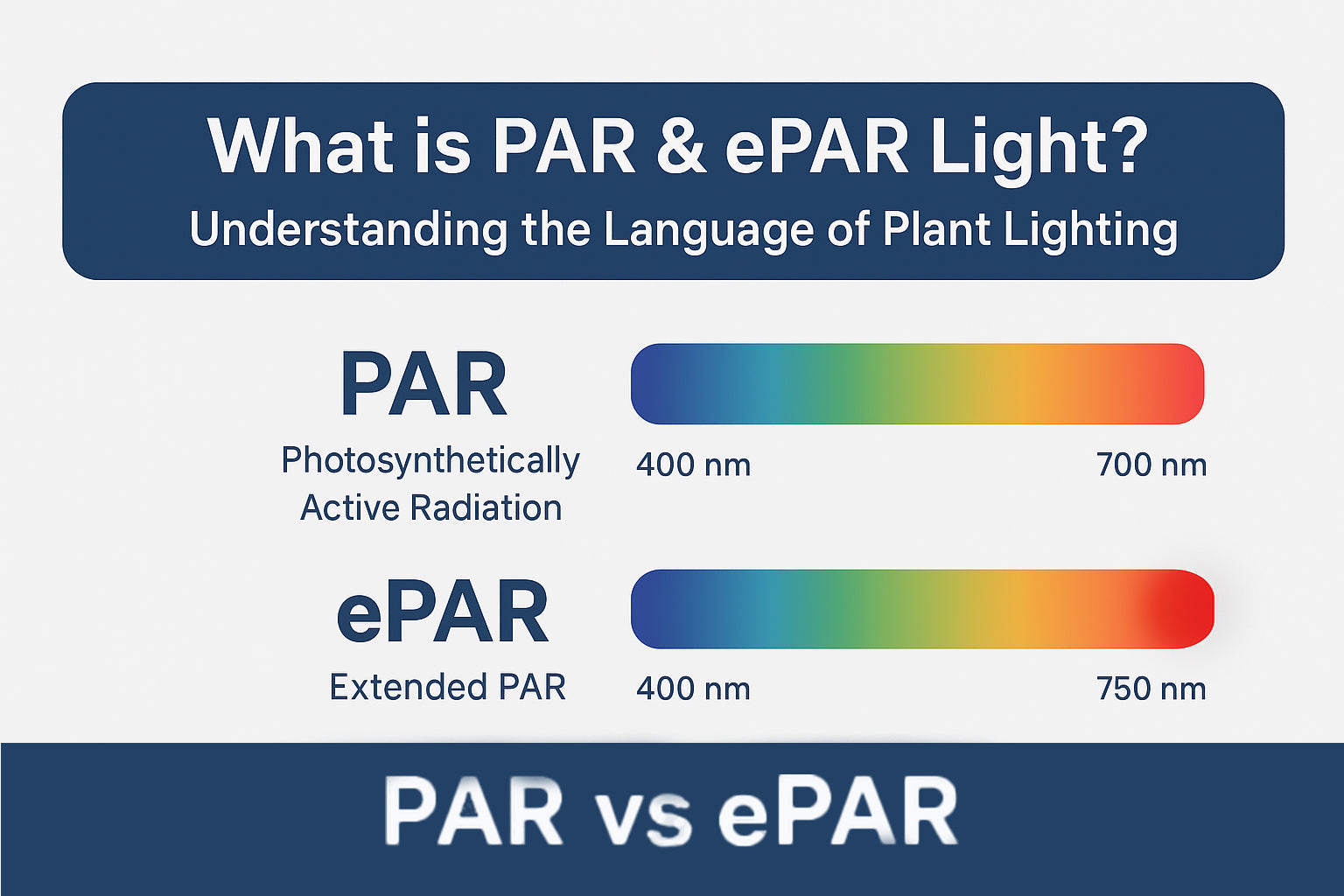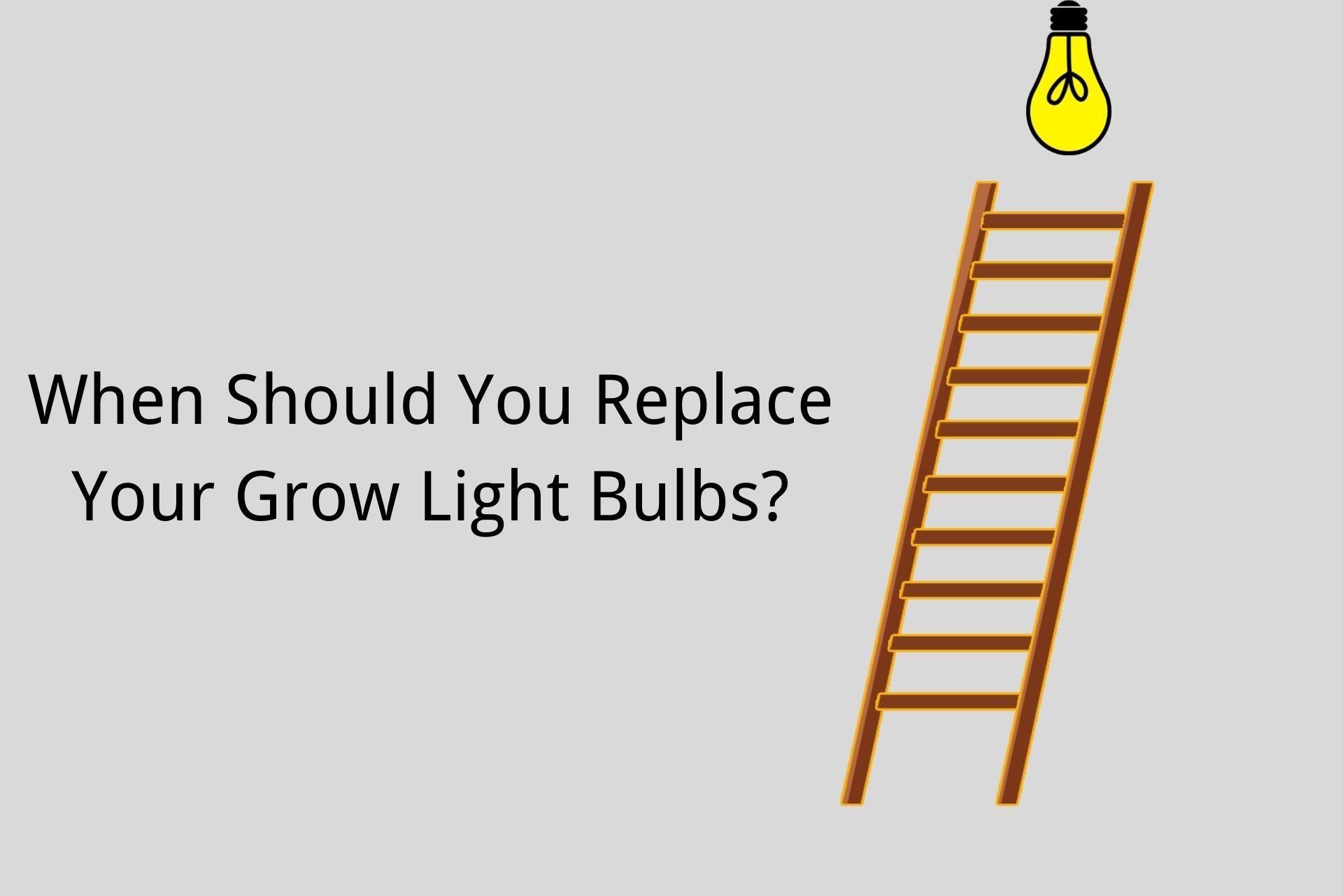
When Should You Replace Your Grow Light Bulbs?
Grow lights are an integral part of an indoor growing system.
To have a high-quality yield, it is important to have a thorough understanding of how a lighting system works and when the grow light bulbs need to be replaced.
This will ensure that you maintain consistent levels of usable light energy (PAR) in the growing area and have healthy, lush green plants.
For indoor growers who use grow lights as sunlight substitutes, it's imperative to know when the grow light bulb is about to bid goodbye.
In this article, Medicgrow will dive deeper to learn about bulb replacement so that you stay at the top of your game.
We'll explore:
- Part 1: How Long Do Regular Grow Light Bulbs Last?
- Part 2: How Long Does LED Grow Light Last?
- Part 3: How To Tell When Your Light Bulbs Need Replacing?
- Part 4: Why Do Grow Light Bulbs Need To Be Replaced?
Before any further ado, let's start by talking about the life span of grow light bulbs.
How Long Do Regular Grow Light Bulbs Last?
As a general rule of thumb, growers prefer to change the growing lamp bulbs they grow every year. This can be pretty vague as some bulbs may be able to last longer while others may die out only in a few months.
With so many factors involved, there isn't a fixed time for replacing bulbs.
Several grow light bulb manufacturers mention upfront that their bulb will last a certain number of hours (for instance, 15000 hours). This gives growers a better understanding of their lighting systems.
It must be noted that almost all best-grow light bulbs for indoor plants may need to be replaced after a while. Be it HID lights, MH bulbs, incandescent bulbs, or even full-spectrum LED grow lights—all of them will need to be replaced after the estimated lifespan.
This is because even the best grow light bulbs tend to lose their efficiency gradually, leading to less usable light energy.
When you first install a grow light, it produces the maximum amount of lumens. 'Lumens' refers to the total amount of visible light that is emitted from a lighting system. Growing lamps have a lifespan that is measured in hours.
Some UV grow light bulbs might last longer than others. For example, LED grow lights have an estimated lifespan of 50,000-100,000 hours while HPS bulbs have an estimated lifespan of 24,000 hours. Because of the difference in technologies, it's hard to compare two lighting systems.

Image Source: illumient.com
There are tell-tale signs of a bulb needing replacement, but we'll talk about those later in the article.
As growers use the 800W LED grow lights regularly, the light output (or the amount of visible light emitted) decreases gradually. After about, say, 15,000 hours, the grow LED light bulb may have a much lower output even though it may be consuming the same amount of energy.
What this means is that your plants may not be getting sufficient light, while your energy bill stays the same. Since plants need adequate light to grow, less light means that plants will grow slower. In such cases, the solution is to replace growing lamps whenever necessary.
Lamp Lumen Depreciation
Lamp Lumen Depreciation or LLD is a measure that light manufacturers use to calculate the estimated lifetime value of a grow light.
Lumen Depreciation, in simple words, refers to the decrease in light output of a lighting system over some time.

Image Source: wendelcompanies.com
The lumen depreciation rate is affected by multiple variables such as the kind of lighting system you have, the total hours of usage, temperature, maintenance, etc.
But why does light output matter? Does it make a difference if the light output decreases? And why is it so important to have uniform light across the plant canopy? Let's take a look.
How Does Light Uniformity Affect Plants?
When considering factors such as light output, efficiency, and intensity, growers tend to miss out on light uniformity.
Uniform lighting across the plant canopy ensures that your plants grow at an even rate and are at the same stage of growth. When lighting is unevenly spread out, some plants may grow faster than others and end up overshadowing them.
It also means that the plants that are getting more light in the plant canopy will have more water requirements.
The light intensity of LED plant grow lights varies across the plant canopy. Typically, plants that fall right under the grow lights receive the most light. This spot is known as the 'hotspot'.
On the other hand, light intensity is lesser where plants are grown further from the light source. This is why light placement, intensity, and uniformity play a huge role in maximizing yield in indoor gardening.
Likewise, if you have multiple lights in a grow room like a grow tent, it's important to keep the right placement and distance in mind to ensure that light spreads evenly in the grow room.
Now, let's take a look at how long LED grow lights last.
How Long Does LED Grow Light Last?
A reason why growers choose LED growing lamps is that they are durable and have a longer lifespan than other lighting systems, typically lasting for a couple of years at least.
LED lighting systems like Medicgrow Smart grow light are super versatile and growers can modify their lighting systems to meet their requirements.
Depending on the brand, the technology, and the quality, LED light bulbs for indoor plants can last anywhere from 50,000 to 100,000 hours while on the other hand, other grow light fixtures may last anywhere from 15,000 to 24,000 hours.
LEDs Don’t Have Bulbs That Need Replacing
Grow LED light bulbs can be used in place of other grow lights such as HIDs (HPS and metal halides).
For instance, Medic Grow NEO 1000W LED grow lights can be used to replace 1000-watt HID lights in your grow room. These LED plants grow lights are suitable for large-scale projects/commercial purposes as well as hobby growth.
These are grow LEDs full spectrums—which means that they provide your plants with an array of different wavelengths as opposed to only having blue or red colors of the spectrum. Full spectrum LED grow lamp provides your plants with light for every stage of growth.

Because of the advanced technology, LED grow lights produce less heat than other lighting systems. This doesn't mean that they produce no heat at all. As is the case with any grow light, the heat output can be managed with proper thermal management.
Before making a purchase, growers must also take into account the technology of the grow light bulbs bunnings that they use.
There are several cheap LED plant grow lights in the market that are either low quality and/or don't feature the latest technology. Outdated technology means that these lights wouldn't deliver the best results.
LED plant grow lights, such as Medicgrow NEO-780 may also come with additional equipment and features such as heat sinks, dimmers, controllers, grow LED full spectrum, scheduling, etc.
Wondering how to tell if your grow light bulbs need replacing? Let's take a look at it in the next part.
How To Tell When Your Light Bulbs Need Replacing?
There are two main signs that you should look out for:
- Reduced Lumen Output (meaning reduced light output)
- Flickering or blinking grow lights.
Let's talk about them one by one.
Firstly, reduced brightness or light output signals usually indicate that the grow light bulbs need to be replaced. As the lumen output decreases, the lighting system's ability to fulfill the requirements of your plants also decreases.
Depending on the type and quality of lights that you have, your lights may last for as little as 6 months to a couple of years.
Using PAR Meters
Growers can use a PAR meter (basically a light meter) to measure the PAR output of a grow light. Once you have your numbers, you can use reflectors in your grow room to increase the PAR output.

If you're growing in a grow tent, the walls will have a reflective film that works the same way as reflectors. Ideally, you should take readings from the meter after the grow light bulb is first installed and then continue taking readings every six months or so. This will help you understand how much longer your bulb can go on.
When the PAR output reaches below a certain level, you know that it's time to replace your lighting fixtures.
Secondly, having flickering or blinking growing lamps doesn't necessarily mean that your bulbs need to be replaced—it could mean that you have a wiring issue, faulty switch, loose connections, etc.
Inspect the grow lights carefully and take a look at the light meter. If you're sure that it's not one of these problems and you still find your lights flickering or blinking, your bulb may be about to go out.
Now that you know when your growing lamps need to be changed, let's try to understand why it is that you need to change your grow light bulbs for regular lamps.
Why Do Grow Light Bulbs Need To Be Replaced?
Grow light bulbs can require massive investment from gardeners and as much as growers would like for them to last longer, they need to be replaced after their light output has decreased immensely.
Grow light bulbs such as HPS, MH or CMH are known as HIDs and are gas-powered. Each of these bulbs features a specific chemical composition.
Different grow light bulbs feature different technologies and compositions which makes them ideal for different kinds of set-ups.
Growers must not only look at the life expectancy of the grow lights but also how they perform once this estimated lifespan has been reached. Grow lights, no matter what type you own, are bound to deplete with time and need replacement. Depending on the composition, some bulbs may depreciate faster than others.
For instance, after running for 20,000 hours, t5 fluorescent bulbs will lose about 5-10% of their lumen output. They will need to be replaced in approximately 18-24 months.
Grow Light Maintenance Tips
Here are a few growing lamp maintenance tips to keep your lights in the best state:
- Make sure to schedule a light replacement or inspect the light output, once the estimated lifespan of a grow light is over. Several LED grow light bulbs for indoor plants may still work efficiently while others may need replacement.
- Cleaning dust buildup that accumulates on your lighting system is a great way to maintain appropriate light output.
- Make sure that you do not use a wet cloth, water, or cleaning solution near the socket or base of the grow lights. This can lead to a short circuit or a fire breakout. It's best to learn more about basic electrical wiring to prevent any mishaps.
- Ensure that the lighting system is turned off and unplugged before you start cleaning it. Do not handle lighting systems right after they've been turned off. The lights can be really hot.
- Always follow the instructions that are provided by the manufacturer when installing, cleaning, or replacing grow light bulbs.
- Keep safety measures in mind: make sure that there are no trash or inflammable items such as cloth or papers in the grow room.
- Safety supplies that are beneficial to have in your grow room include fire extinguishers, coverall suits, eye protection, and face masks.
Final Thoughts
So, which one of these growing lamps is better: fluorescents, HIDs, and LEDs?The answer is: that it depends on the size of your operation, your budget, and most importantly: your requirements.
The high upfront charges for 150W LED grow lights are a reason why growers tend to choose other lighting systems. Led-grow light bulbs for indoor plants can require quite an investment from growers.
Typically, amateurs and hobby growers don't have the budget to spend such an amount of money on lighting systems for their plants, which is why they may prefer HIDs. However, LEDs may need to be replaced much less frequently than HIDs—you can go years without needing a replacement. This helps you save time and energy.
Additionally, some companies offer rebates and incentives for using LED plant grow lights, which means extra savings. While choosing growing lamps for your growing area, consider all of these factors and make an informed decision.
Related Posts:
What Type of Light Is Best for Growing Plants Indoors?
Choose The Right Grow Light Reflector for Your Grow Tent
The Complete Guide To Grow Room Pest Control
FAQs about LED Grow Light Bulbs
1. How Long Do LED Grow Lights Last?
LED grow lights typically last between 50,000 to 100,000 hours, depending on the quality of the light and how it's used. This lifespan can translate to several years of continuous use, making them a durable and energy-efficient option for plant growth.
2. How Often Should I Replace Grow Lights?
LED grow lights have the longest lifespan, typically lasting between 50,000 to 100,000 hours, making them suitable for several years of use before needing replacement.
HID lights usually last between 10,000 to 24,000 hours, with Metal Halide bulbs recommended for replacement every 6-12 months and High-Pressure Sodium bulbs every 12-18 months. Fluorescent lights have a lifespan of around 20,000 hours, and it’s recommended to replace them every 12-18 months.
If you notice a significant drop in brightness, it may be time to replace them. Following the manufacturer's recommended replacement schedule based on the type of light and its usage will help ensure optimal lighting conditions for plant growth.
3. Do LED Grow Lights Lose Their Effectiveness Over Time?
Yes, LED grow lights do lose their effectiveness over time, but at a much slower rate compared to other types of grow lights. LEDs have a long lifespan, often lasting between 50,000 to 100,000 hours, but their light output gradually diminishes as they age. This reduction in intensity can affect the growth and yield of plants.
4. When to Stop Using Grow Lights?
You should stop using grow lights under the following circumstances:
- Light Degradation: If your grow lights have significantly diminished in brightness or effectiveness, it’s time to stop using them and consider replacing them to ensure your plants continue to receive adequate light for growth.
- Plant Rest Period: Plants require a period of darkness to rest and grow, especially when you want to induce flowering. For example, many flowering plants, need 12 hours of uninterrupted darkness each day during the flowering stage to trigger blooming.
Stopping the use of grow lights at the right time can align with the plant's natural needs and avoid unnecessary energy consumption.
Featured Products
Blog Posts
Contact Us with Any Idea!
- Choosing a selection results in a full page refresh.
!















